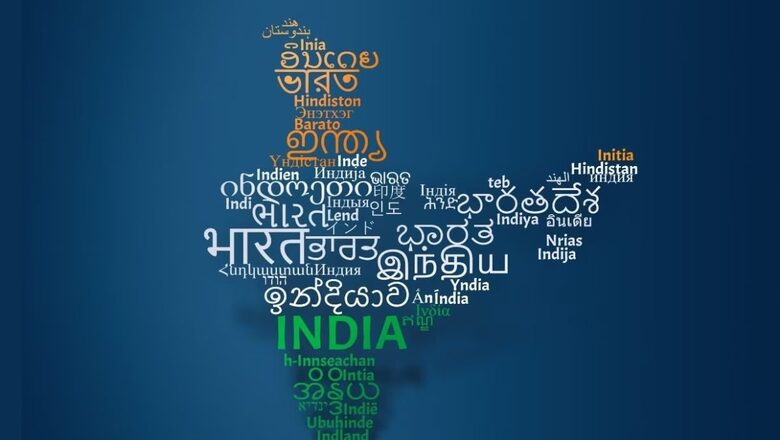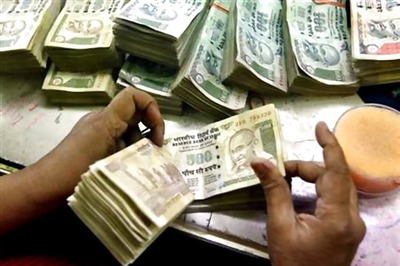
views
There is a buzz that the government may soon introduce a resolution to exclude India from the official name of the republic. The Article 1 of the Constitution says, “India, that is Bharat, shall be a Union of States”. It is actually the only instance of Bharat being mentioned in the entire Constitution. At all other places, the republic is mentioned as India.
The expression ‘President of Bharat’ used in G20 invite appears incongruous. Article 52 of the Constitution of India says that there shall be a President of India. The standard letterhead of President reads राष्ट्रपति, भारत गणराज्य in Hindi and President of India in English. There is a certain sanctity attached to the institutions, especially the dignified office of the President of India, which should not be undermined in a whimsical manner.
The names India, Bharat and Hindustan, although they might have different vintages, are commonly used for our country in the modern times. While it is common to use India in English, Bharat in Hindi and other Indian languages, and Hindustan in Urdu, there has been no clash as such. Thus, the Bharatiya Vidya Bhavan chose to publish the famous series, The History and Culture of the Indian People, under the general editorship of RC Majumdar. When industrialist GD Birla lent K.M. Munshi, the President, Bharatiya Vidya Bhavan (estd.1938), the support for the project in 1944, a special purpose vehicle was set up called Bharatiya Itihasa Samiti, or the Academy of Indian History. Munshi’s commitment to “Bharatiya’ culture was never in doubt. However, nowhere has he shied away from using the word India, while writing in English.
The name India was seamlessly used by all nationalists namely Swami Vivekananda, Sri Aurobindo, Lokmanya Tilak, Lala Lajpat Rai, Bipin Chandra Pal, Sister Nivedita, Pandit Madan Mohan Malaviya, Veer Savarkar, Sardar Vallabhbhai Patel and Syama Prasad Mookerji while writing or speaking in English. Even M.K. Gandhi, who must be credited as the ‘de-coloniser’ of the Indian mind, never shied away from using India. The same person would use the word Bharat while speaking or writing in the native language whether Hindi, Bengali, Marathi or Gujarati. To imagine a clash between India and Bharat on that account is disingenuous. The conflict between India v/s Bharat was a copywriter’s spin meant to capture the gulf between the affluent and underprivileged population of India. However, the same underprivileged population celebrates the victory of “Indian” cricket team the most. Nobody in the public calls the Indian cricket team as Bharatiya Cricket Dal.
The government justification for excluding the name India remains to be heard. Possibly, it would be revealed only on the floor of the House in Parliament. However, the arguments of those advocating the name Bharat, in exclusion to India, are pedantic. They refer to the verse in the Vishnu Puran, which describes the land lying between the Himalayas and the sea as Bharat. The continuity of that name is implicit rather than evident.
Little is known about how Buddha, Chandragupta Maurya, Samudragupta, Harshvardhan, Rajendra Chola, Shivaji or Baji Rao-I used to describe the country. In the 19th century, it is evident from the contemporaneous printed works, that India was called Bharat in vernacular languages. The use of Bharat (Bharatvarsha) was so seamless that it seems part of historic memory rather than a coinage. However, we never notice any conflict between the two words, India and Bharat, both having different spheres in linguistic terms.
During the Constituent Assembly debates, there was an animated discussion on the subject. There were members namely Prof. Shibban Lal Saksena, Lokenath Mishra and M. Ananthasayam Ayyangar who insisted on the name of Bharat in exclusion to India, when amendments to Article 1 were moved on November 15, 1948. H.V. Kamath, during the discussion on Draft Constitution on September 18, 1949, moved an amendment to Dr. Ambedkar’s formulation of Article 1 that India, that is Bharat, shall be a Union of States. Kamath’s option were a) Bharat or, in the English language India, shall be a Union of States and b) Hind, or in English language India, shall be a Union of States. His inspiration was an article from the 1937-Constitution of Irish Free State – “The name of the State is Eire, or, in the English language, Ireland”. Seth Govind Das’ suggestion was –“Bharat known as India also in foreign countries”. Shri Kallur Subbha Rao (Madras) supported Bharat, and even wanted to rename Hindi language as Bharati. Ram Sahai (Madhya Bharat) also wanted the name to be Bharat. Kamlapati Tripathi more or less agreed with Kamath overtly by supporting “Bharat, that is India” or alternatively “Bharat, that is known in the English language as India”. Hargovind Pant (United Provinces) by quoting the ancient Sanskrit axiom –“Jamboo Dwipay, Bharat Varshe, Bharat Khande, Aryavartay etc” supported the name Bharat in exclusion to India.
Ultimately, when President of the Constituent Assembly Dr. Rajendra Prasad put the motion – (1) Bharat, or in the English language India shall be an Union of States — to voting, the assembly was divided by show of hands (there were no electronic voting systems in Parliament then) Ayes-38 and Noes-51. Provided that (as on December 31, 1947), there were 229 members in the Constituent Assembly representing the provinces, and 70 members from Indian princely states (that largely went vacant), comparatively fewer number of members appeared to have participated in the debate as evident from the division of the vote, although at stake was the most important possession of the nation, her fair name! The amendment was thus negated. Later on, “India, that is Bharat, shall be the Union of States” was adopted.
The survival of the name of India as one of the two names of republic was not really unfortunate. Since the 19th century, the appellation India has gone around the world. Whether it was Dadabhai Naoroji setting up East India Association (estd. 1867) in London, or Swami Vivekananda preaching the glories of this ancient nation in the USA, or our national leaders such as G.K. Gokhale, Lala Lajpat Rai advocating the cause of self-government for the country abroad, they have used the name India. Even Tagore, a greater cultural icon is harder to find, used India in his lecture series on Nationalism in the USA during 1916-17. Subhas Chandra Bose, a greater nationalist is harder to find, also used India without reservation, although he later popularised the word “Hind” through his Azad Hind government.
It would have led to more consequential rupture with history if the nation excluded the name India. Most of the knowledge production about this land and its people (being gazetteers, history, geography and archaeology) has happened under the name India. Bharat nowhere comes near India if knowledge production is compared.
It is not that after independence Bharat was given a short shift. Bharat Sevak Samaj, as a national development agency, sponsored by Planning Commission, was founded by Prime Minister Jawaharlal Nehru in 1952. Public Sector Undertakings such as Bharat Petroleum Corporation Limited (1952), Bharat Electronics Limited (1954) and Bharat Heavy Electricals Limited (1956) were incorporated during the first decade of independence itself. Hindustan was not neglected either when it came to naming of the PSUs. Even the Government of India was called Bharat Sarkar.
The name India is not a new invention. The Greeks are credited with this coinage due to a particular disadvantage. The Greek language has no H (which is why they cannot write Hellenica, a name for Greece, perfectly). India is, in turn, believed to be a corruption of Hindu, the Persian derivative of Sindhu (the river Indus). However, since the colonial era, which coincided with Hindus resuming sea voyages, this country emerged in the global imagination as India.
In the 21st century, our stakes are high to keep the name of India afloat. After decades of hard and smart work, India is finally being recognised on the global stage. If at that crucial stage, the world’s most populous country rolls back her name India, it would have to spend another 20 to 25 years to create an alternative brand. This Sisyphus labour is best avoided.
There are several countries in the world, all developed, called differently by natives and foreigners. Germany is Deutschland to its natives, Greece is the Hellenic Republic, the name for Japan in Japanese is Nippon, and South Koreans call their country Hanguk. Even China is Zhonggguo to the Chinese, a bit confusing to pronounce. Yet, these countries have no problem on this account. Many of them are manufacturing leaders, whose products find markets worldwide.
The name Bharat is already there; and even institutions like the Reserve Bank of India, Indian Railways, Indian Army, Indian Council of Cultural Relations and Indian Council of Historical Research have their official Hindi equivalents. Thus, the presence of India is not a barrier to anyone wishing to use Bharat. However, insistence solely on Bharat, by excluding India, is misconceived. It is going to hit the prospects of the country badly. We should avoid scoring the self-goal at this critical juncture.
The writer is author of the book ‘The Microphone Men: How Orators Created a Modern India’ (2019) and an independent researcher based in New Delhi. Views expressed in the above piece are personal and solely that of the author. They do not necessarily reflect News18’s views.




















Comments
0 comment